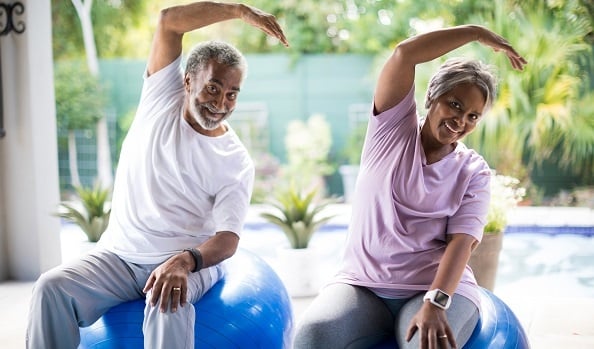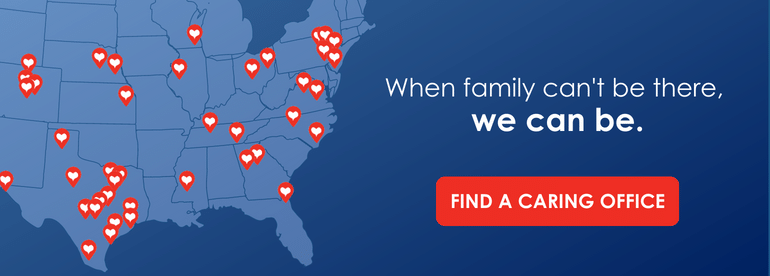If you or another senior is thinking about increasing your physical activity, you are heading in the right direction! Exercising can have physical, emotional, and mental health benefits for people of all ages. You want your personal regimen to be effective in helping you meet your goals. At the same time, safety must be a priority. Here are a few pointers to help you start and maintain a good routine.
Why Exercise Is Good for Seniors
Seniors often do not get the right amount of daily exercise. Exercising on a consistent basis is important for everyone, even those enjoying their retirement years. Here are some reasons that seniors especially need to get moving!
Increases balance
Falls cause the most injuries to seniors out of anything else, but getting regular exercise can help with this particular concern. Exercise is a key part of improving balance and stability, which will lead to a decreased fall risk for seniors.
Builds endurance
The more you exercise, the better at it you become. Exercise will build up a senior's endurance, allowing them to become stronger and healthier.
Improves life expectancy
Regular exercise will help seniors keep both their mind and their body healthy. This equals a longer life expectancy since exercise lowers the risk of many major diseases, such as heart attacks, diabetes, and cancer.
Decreases depression
When you exercise your body releases endorphins. Endorphins help by alleviating the feelings of depression and anxiety, a common problem for many seniors.
Reduces the risk of heart attacks
Heart issues are a major concern for many seniors, due to issues such as poor diet, obesity, family history, and smoking. Regular exercise has been shown to reduce the risk of having a heart attack by increasing the blood flow to the heart, making it pump harder and stronger.
Tips to Creating a Safe Exercise Routine
With those benefits in mind, it's time to start your own exercise routine! Here are some tips to get started.
-
Talk to your primary care physician. They will likely want to do a physical exam and thoroughly discuss your medical history. It might also be necessary to visit your specialists.
-
Create goals can help you to get and stay motivated. Whether it's weight loss, mood improvement, more energy, better balance and mobility, or all of the above, be clear about what you want to achieve and keep it in mind as you work towards it.
-
Start off slowly. Patience is needed to avoid injuring or overexerting yourself. 5 minutes of light cardio just 2 times a week will help you get accustomed to an increased level of activity without making you feel overwhelmed.
-
Over time, increase your workout time, and add more variety. Your body will definitely let you know what you are ready for. So, even if you feel ambitious, be reasonable.
Exercise Ideas
-
Aerobics: Start slow and build in daily cardio sessions. Start with 5 minutes a day to increase heart rate and get those endorphins flowing! After you feel more comfortable, slowly work your way up to 10, 15, 20, and soon 30-minute aerobic sessions most days of the week. Seniors will torch calories, increase energy, improve heart health, and increase joint strength. Walking, jogging, biking, tennis, or swimming are all great options.
-
Squats: Hold onto a chair (if you need to for balance) while slowly bending the knees and lowering your body down until you feel a nice burn in your legs. Building muscle takes repetitions and time. Repeat 10 squats twice. Slowly increase repetitions daily and work up to letting go of the chair, keeping your arms out in straight in front of you.
-
Raise those Arms: With or without weights, sit or stand and raise your arms above your head. Do 10 reps of these. Next, raise your arms to the side. Last but not least, curl those biceps by keeping your arms to your side and raising your forearms upwards. Repeat sets 2-3 times each.
-
Push-Ups: If seniors are able to get on the floor, or push themselves standing against a wall, push-ups are a great upper body workout that requires no equipment. Bend arms and lower upper body downwards, hold for a moment, raise and repeat. Do this 10 times and repeat as many sets as you feel able to complete.
-
Toe and Chair Stands: Seniors can build great muscle mass and balance by doing toe and chair stands. This can reduce the risk of falls and broken bones. Start sitting in a chair, keeping your back and shoulders straight. Extend arms parallel and slowly stand up. Sit down and repeat 10-15 times, doing multiple sets. Take a rest. For the next exercise, the senior stands behind the chair and holds onto it for support, slowly raising up on their tiptoes. Hold for a moment then release heels back down to the floor. Repeat 10-15 times and do multiple sets.
-
Yoga: Yoga is actually one of those forms of exercise which is best practiced indoors. All you need is a small space, no more than 2 feet wide and 6 feet long, where you can spread your yoga mat, and you're good to go.
For more ideas on senior exercise, check out our guide to senior exercises to improve balance! And complement your workout with a healthy diet.


